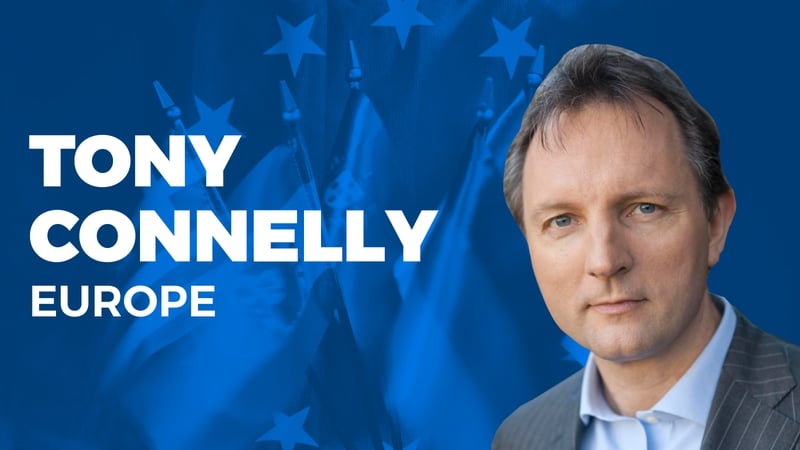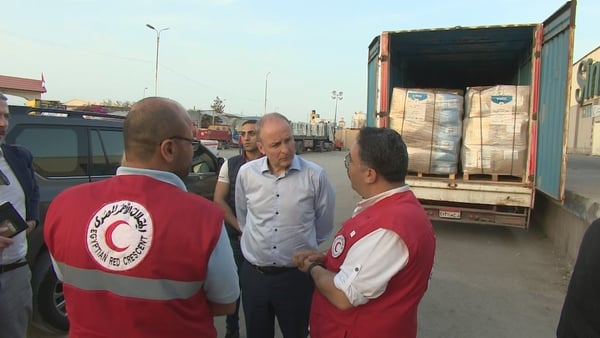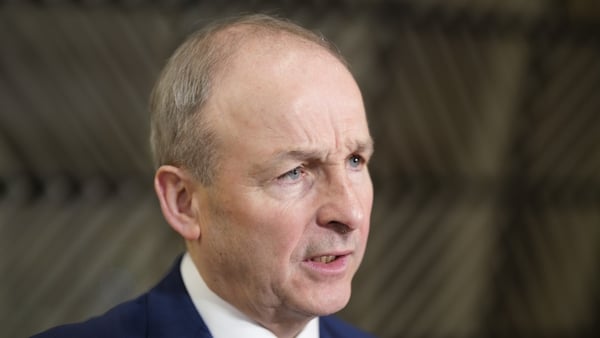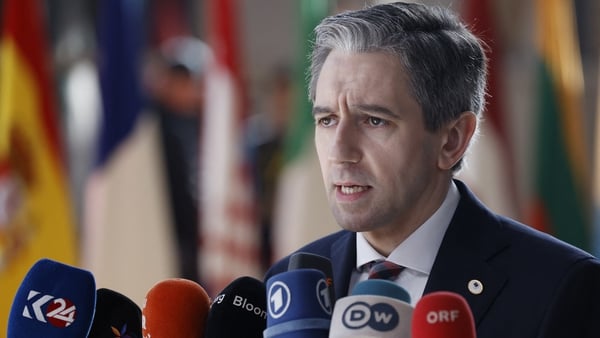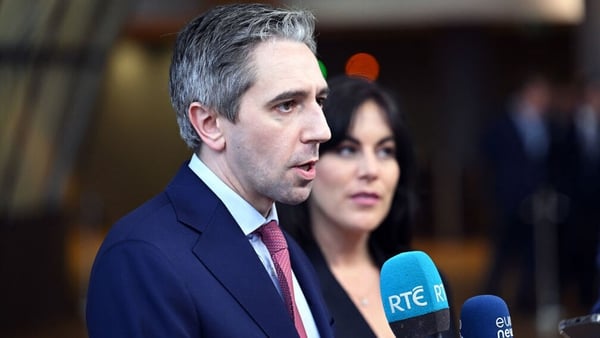It may go down as the meeting that decisively altered the course of Brexit history, or it could be consigned to the annals as a worthy but doomed gambit.
Whatever destiny decides, the Thornton Manor encounter between Boris Johnson and Leo Varadkar was certainly furtive in its planning, and had the makings of a caper comedy.
The location for the meeting was in itself fraught with difficult protocol. It's understood the Irish Government had hoped it would be in Dublin, but Downing Street felt that would be something of a humiliation, given that Johnson had already travelled to Dublin on 9 September.
When a location halfway between Dublin and London was finally agreed upon, a government spokesman issued the mysterious notice that the encounter would happen in the "north west of England".
Thanks to the social media storm about Coleen Rooney and Rebekah Vardy, there was a healthy cohort of tabloid journalists on the loose in the greater Liverpool area anyway.
The fact that Rooney had held her 21st birthday party in Thornton Manor added to the unstable compound of celebrity gossip and high Brexit, the result being that the secret northwest England location was sniffed out in a morning, with camera crews beating the prime ministerial convoys to the venue, their occupants expecting total secrecy.
Mr Varadkar and Mr Johnson met for most of three hours alone in the Tudor mansion, with two teams of officials joining near the end.
A joint statement and subsequent briefings made it clear that the chemistry had changed.
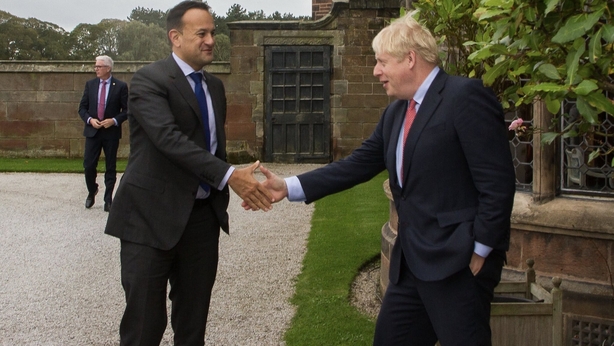
In fact, the breakthrough was not anticipated and had pierced the mood of gloom that had settled over Brussels.
Things had not been going well. Mr Johnson’s summer hyperbole about eyeballing the EU into submission over the backstop had been running out of puff. His alternative proposals were meeting a wall of EU intransigence.
The UK had tabled a 17-page legal text on Wednesday 2 October that was supposed to replace the backstop with a new protocol.
There were three big elements: Northern Ireland would fully align with the EU single market on industrial goods and agri-food products, meaning a regulatory border along the Irish Sea, and an enforcement role for the European Court of Justice.
Northern Ireland would, however, leave the EU’s customs union and the subsequent customs border would be managed through a mix of exemptions and derogations, technology, checks away from the border, data exchange and so on.
Thirdly, there would be a consent mechanism that could give the DUP a veto, either before the new arrangements came into effect or every four years afterward.
Hostility and suspicion
The proposals drew hostility and suspicion both from the EU and Ireland. The so-called Stormont lock was immediately denounced as an "upfront, unilateral veto".
There was also a negative response from manufacturing, business, retail, and freight organisations in Northern Ireland, who saw it as the imposition of not one, but two hard borders.
The talking continued, however. After the proposals were tabled there were hours of technical discussions, both in the European Commission headquarters and in the residence of the UK ambassador to the EU.
These were not proper negotiations. Officials from the Commission’s Brexit Task Force, accompanied by experts in customs, animal health and food safety from the Commission’s legal services were basically posing innumerable questions about how the UK plans would work.
Their opposite numbers grew increasingly frustrated that questions were not giving way to proper negotiation, especially on customs. Their view was that Irish, British and EU customs experts should be in a room working all this stuff out.

It’s understood that when the EU side raised objections, their counterparts asked what solutions the Commission would accept. Each time they were told that the Commission was not getting into that degree of back-and-forth negotiation.
Driving the UK position was a fundamental insistence that the Northern Ireland-only backstop, borne out of the Joint Report of December 2017, would not fly. It would never gain the acceptance of the House of Commons.
London was also determined to dispel any notion that might be harboured by Ireland or the EU, that a breakdown in talks could shake up the Westminster deadlock, leading to a more sympathetic UK government or even a second referendum.
UK officials warned that that would only raise the prospect of no deal.
On customs, officials insisted they were not intending to impose a hard border, or even infrastructure at or near the border. Controls would be "risk-based", meaning that not everything needed to be checked, and such checks could be done at the factory or the farm.
Goods consignments could be lodged electronically and declared using technology that already existed.
The UK view was that British and Irish customs officials currently exchange data in order to combat diesel smuggling, excise and VAT fraud. Why not enhance such cooperation and then increase fines and "disincentives" to reduce the risk of smuggling?
However, it appears these ideas ran into implacable resistance. UK officials challenged the notion that the levels of trade north and south posed a risk to the integrity of the single market, a key EU concern. Indeed, in his letter to Commission President Jean-Claude Juncker, Boris Johnson said cross border trade volumes amounted to just over 1% of all UK-EU trade.
Smaller traders, or those whose annual turnover is under the VAT threshold of £85,000, should be exempt from tariffs, UK officials argued.
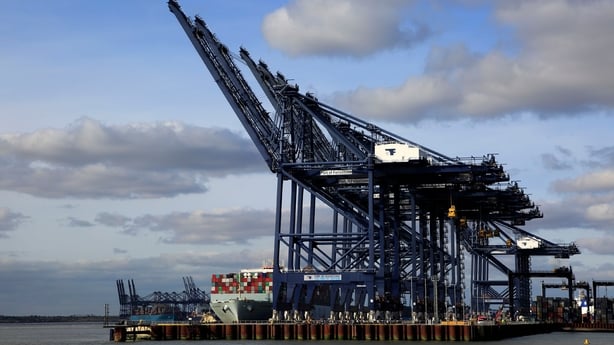
Did all goods need to attract tariffs? If a plumber from Derry was bringing a part to fix a washing machine in Buncrana, should that product face duty just because Northern Ireland was part of a third country?
However, EU officials took a hard line on anything that might leave an ambiguous situation on the Irish border when it came to the single market.
Larger companies not enjoying tariff free exemptions would simply divide into smaller subsidiaries in order to evade duties. The view in Brussels is that the market would adapt to an ambiguous situation, giving rise to fraud and smuggling.
More:
Brexit Republic: From 'Help!' to Imagine in the Brexit process
Border unimaginable to anyone with conscience - Bercow
Economy to slip into recession after no-deal Brexit - Central Bank
By Wednesday the signs were that the technical talks were going nowhere, not least because of the row over how Downing Street briefed the morning phone call between Boris Johnson and Chancellor Angela Merkel.
That afternoon, the EU’s chief negotiator, Michel Barnier, delivered a searing rejection of the UK text to the European Parliament. It threatened the all-Ireland economy, it did not meet the objective of avoiding a customs border, its consent mechanism amounted to a veto, it was not legally operable and was devoid of legal certainty, and it undermined the single market.
"We're talking about the credibility of the Single Market here"
"There would be controls spread out across Ireland," Barnier told MEPs. "It will largely be based on exemptions and derogations, on technology that has yet to be developed, changes to international law, to the Common Transit Convention, and a new combined system with none of the guarantees set out in the [Irish] Protocol."
He added: "We're talking about the credibility of the Single Market here. Its credibility to consumers, to companies, and of course to third countries that we negotiate agreements with."
But behind the scenes there were contacts.
On Tuesday night Simon Coveney made an eyebrow raising dash to Brussels to meet Mr Barnier, having been involved in a budget-related news conference as late as 4.30pm.
If an idea was going to be hatched in Dublin it would have to be cleared through the Task Force first, to avoid the perception that Ireland was negotiating bilaterally with the UK.
"It was all sychronised with the EU and the Task Force," says a senior EU figure on Thursday night after the Johnson-Varadkar meeting.
"Barnier and Coveney met on Tuesday night, and officials were tick-tacking this morning [Thursday]. The ball is now in the British court, and it's up to Barclay to convince Barnier tomorrow that there's enough substance to resume the negotiations."
We need your consent to load this rte-player contentWe use rte-player to manage extra content that can set cookies on your device and collect data about your activity. Please review their details and accept them to load the content.Manage Preferences
Getting those negotiations onto a more serious footing was the main objective, but given the frustrating and seemingly fruitless technical discussions going back to 2 October, something substantial had to be changed.
Irish officials believed they had, but would not go into detail. Nor would they predict if a deal could be struck by next week's summit or by the end of the month.
"There are some ideas that will have to be examined, explored, tested by experts," was all that one Irish official would say.
Speaking to the media at John Lennon Airport in Liverpool, Leo Varadkar was optimistic, but paraphrasing the 2nd century Roman grammarian Aulus Gellius, he warned there was "many a slip between cup and lip".
Some officials in Brussels were in the dark on Thursday night as to what had been agreed.
Total confusion
"Either the British must have told the Irish that they're willing to make a serious leap on customs, or there is total confusion," said one senior EU official.
The official said that both Ireland and the UK had signalled a willingness to review their position on the consent issue. But customs remained a major stumbling block.
Another official would not go into detail but insisted the EU's position had not changed. "We need a legally operable solution in keeping with the outcome of the backstop".
On Friday morning Michel Barnier and the Brexit Secretary Steve Barclay met for two-and-a-half hours over breakfast.

Afterwards Barnier marched with his team, pursued by a clutch of camera crews, through Schuman rail and metro station, which acts as an underground shortcut from the Commission headquarters to the European Council building across the Rue de la Loi boulevard.
For over an hour, he briefed EU27 ambassadors on the UK’s fresh proposals. Barnier was sparing in his detail and circumspect about their contents. There were stark warnings about how sensitive the issues were, and how confidentiality was of vital importance.
He rejected the idea that he was recommending a "tunnel", the secretive, leak-free process which heralded the final breakthrough in the initial Withdrawal Agreement negotiations one year ago.
Instead, he suggested that the new proposals were simply worthy of exploration. "The Commission wanted to see how far it was possible to go," said one source close to the negotiations, "and then we’ll see".
However, Barnier delivered two key messages: the UK had moved on customs and had moved consent, the two most difficult aspects of the British proposals.
According to another source, Barnier said the UK was moving back towards the objectives of the original Northern Ireland-only backstop, which has the avoidance of a customs border at its heart.
Another diplomat said that although things were "extremely sensitive", the assumption was that the original Northern Ireland-only backstop would now be the "baseline" on which any new agreement on customs was built.
However, the EU is well aware that as things stand, UK law says there cannot be any differential on customs between Northern Ireland and the UK, thanks to the amendment sponsored by Jacob Rees-Mogg MP in July 2018.
"Customs is the problem. Customs is a binary choice. Consent is less of a problem"
On the consent issue, Mr Barnier is also understood to have said the UK was prepared to accept a simple majority endorsement for Northern Ireland to exit the new version of the backstop, if that indeed is what materialises.
That would mean no party has a veto, but it was not clear if the majority referred to Stormont Assembly or even a referendum.
"There is the will to try and fix this," says another EU source. "Customs is the problem. Customs is a binary choice. Consent is less of a problem. It's easier to work on it. It may be extremely sensitive politically, but it's easier to handle when it comes to drafting. It's not difficult to come up with something conceptually."
Mr Barnier then briefed the Brexit Steering Group in the European Parliament.
"There seems to be movement from the British side", said one MEP who attended the briefing, "so we will see whether that move is real in the next few days."
However, the MEP was sceptical as to Mr Johnson's true intentions.
"My view is that he doesn't want a deal and wants to blame the Europeans. Of course I can't ignore the positive vibes around the meeting with the Taoiseach and the positive vibes this morning with Barnier.
"But imagine he accepts the first version of the backstop, dressed up with another name, some cosmetic changes and he accepts that. Do you think he has a majority for that in the House of Commons?"
However, the idea that Johnson does want a deal has gained currency in recent days.
"Johnson seems to be very anxious to do a deal," said one senior EU figure. "He has overcome some of the naysayers in Downing Street. He has come to the political conclusion that he has a better chance of winning an election with a deal and being out of the EU, rather than being forced into an extension where they're not out."
Risks of rejection by UK Parliament
But the risks of a last minute deal modelled on the original backstop being rejected again by the UK parliament are formidable.
Everything will depend on how the customs dilemma is addressed.
Because it is such a binary issue, there are only a few options on the table that might be acceptable to both sides, now that Johnson has - if Michel Barnier is to be believed - accepted the reality that there can't be a customs border on the island of Ireland.
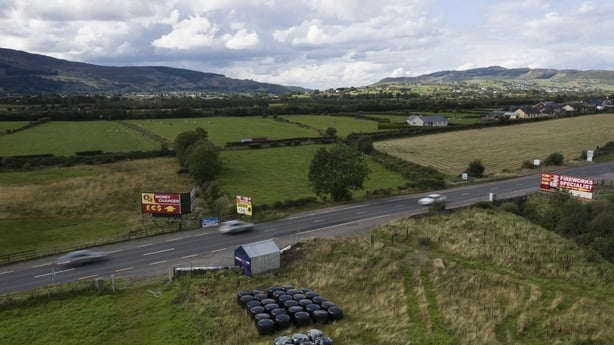
The most prominent idea is that the EU could adapt the "customs partnership" idea, first put forward by Theresa May in the spring of 2018.
The New Customs Partnership (NCP), as it was called, would have seen the UK have its own customs territory with its own free trade policy. However, the UK would have agreed to follow EU tariffs and quotas on imports to the UK that were ultimately destined for the single market.
If the goods were only going to the UK, and the British tariff was lower than the EU tariff, then the importer would receive a rebate for the difference.
The goods would be tracked to make sure the authorities knew if they were staying in the UK, or travelling on to the EU single market, either on the continent or in Ireland.
The idea was ridiculed because it seemed a legal and bureaucratic nightmare. In the event it died a death when it was folded into May’s doomed Chequers plan.
However, if adapted for Northern Ireland only, it may be easier to manage.
Northern Ireland would stay in the UK's customs territory, keeping the DUP on board, but the North would apply EU tariffs on goods coming in from Great Britain.
If the goods were destined for Northern Ireland only, and the EU tariff that was applied at Belfast Port was higher than the UK tariff, then the importer would be entitled to a rebate, much in the same way that tourists leaving their holiday destination can benefit from a VAT rebate.
"Fraud attempts could be detected"
As Martin Sandbu wrote recently in the Financial Times: "Such tariff rebates could be managed via the tax system for individuals, so only Northern Irish residents would benefit, and via VAT tracking for re-exports.
"Since named individuals and firms would have to claim the rebate, fraud attempts could be detected."
If the goods were destined for the South, then nothing would change as the EU tariff would have already been applied at Belfast or Larne ports.
This effectively moves the customs border to the ports, but Northern Ireland would technically remain within the UK's customs territory.
It would also mean that Northern Ireland would still be able to benefit from any free trade agreements (FTAs) that the UK struck around the world, although because the North would remain within the EU's regulatory sphere for food safety, there could be restriction of food products that formed part of such a trade deal.
An offshoot of this solution could also require market surveillance and perhaps even discreet checks at Irish ports and airports to make doubly sure that goods circulating from Ireland to the rest of the EU single market were fully customs compliant.
It's also important to remember that a future FTA agreed between the EU and UK that abolished all tariffs and quotas would render this revised backstop plan unnecessary.
It should be said that this idea may not be the one that squares the customs circle. Sources have confirmed that Michel Barnier did not raise this model in his briefing of EU27 ambassadors on Friday.
But it meets many of the most difficult criteria.
Johnson may require Labour support
However, it will be politically perilous for Mr Johnson, not least because he resigned as foreign secretary over a similar plan for the whole of the UK. If the DUP rejects it, the European Research Group may follow suit, and Mr Johnson might need the support of up to 70 Labour MPs.
There are also, it shouldn't be forgotten, risks for Leo Varadkar. Having long insisted there could never be a time limit to the backstop, any consent mechanism that carries a popular or Assembly vote has the potential to be a time limit, if there is a majority to opt out of the arrangements.
But Johnson himself is in a much more volatile and toxic endgame. He is cornered by the EU's greater negotiating leverage and the reality that if he doesn't secure a last minute deal, his declamatory "die in the ditch" bombast over leaving on 31 October will have been seriously punctured.
If the plan does get through against so many odds, he may find that Mr Varadkar is one of the few friends he has.
